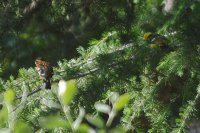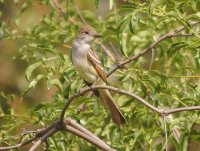-
Welcome to the Community Forums at HiveWire 3D! Please note that the user name you choose for our forum will be displayed to the public. Our store was closed as January 4, 2021. You can find HiveWire 3D and Lisa's Botanicals products, as well as many of our Contributing Artists, at Renderosity. This thread lists where many are now selling their products. Renderosity is generously putting products which were purchased at HiveWire 3D and are now sold at their store into customer accounts by gifting them. This is not an overnight process so please be patient, if you have already emailed them about this. If you have NOT emailed them, please see the 2nd post in this thread for instructions on what you need to do
You are using an out of date browser. It may not display this or other websites correctly.
You should upgrade or use an alternative browser.
You should upgrade or use an alternative browser.
11th Annual Songbird Remix Audubon Sale!
- Thread starter LisaB
- Start date
Nile river
the legendary heron

the legendary heron

thanks Alisa!
nice work...
sorry,... late with today's Bird Facts...
sorry,... late with today's Bird Facts...
- The most common symbol found on any form of currency is a type of bird
I have a cool local bird story to share from our local Raptor Center:
Recovered bald eagle released, reunited with mate near Port Angeles | Peninsula Daily News
The Bald Eagle is found in this pack of Ken's:
Songbird ReMix Birds of Prey Vol 4 - Eagles of the World - A Ken Gilliland 3D Creation
Today's Bird Facts:
- The musical call made by Whooper Swans at the moment of death is believed to be the origin of the “swan song” phrase.
- Birds in the Mimidae (Mockingbird/Thrasher) and Icteridae (blackbird/oriole) families possess dual vocal chords allowing them to sing two different sounds at once
A true conservationist is a man who knows that the world is not given by his fathers,
but borrowed from his children.
--John James Audubon
Today's Bird Facts:
but borrowed from his children.
--John James Audubon
Today's Bird Facts:
- There is over 10,000 different bird species in the world. The Songbird ReMix series has only scratched the surface (doing a little over 10% of them)
- Today (April 26th) is National Audubon Day, which not surprisingly coincides with John James Audubon's birthday (1785-1851).
- John James Audubon was not the first person to attempt to paint and describe all the birds of America (Alexander Wilson has that distinction), but for half a century he was the young country’s dominant wildlife artist. His seminal Birds of America, a collection of 435 life-size prints, quickly eclipsed Wilson’s work and is still a standard against which 20th and 21st century bird artists, such as Roger Tory Peterson and David Sibley, are measured.
- Although Audubon had no role in the organization that bears his name, there is a connection: George Bird Grinnell, one of the founders of the early Audubon Society in the late 1800s, was tutored by Lucy Audubon, John James’s widow. Knowing Audubon’s reputation, Grinnell chose his name as the inspiration for the organization’s earliest work to protect birds and their habitats. Today, the name Audubon remains synonymous with birds and bird conservation all over the world.
- One the most populous bird in the world (estimated 5 billion birds) in 1850 would within sixty years go extinct. In written accounts given by those who actually saw the Passenger Pigeon flocks, “Beech tree limbs sagged as the colony crowded on slender branches. The largest colony that nested in Wisconsin as said to have at least 135 million adults and covered over 850 square miles. When the flock took off, the day would turn to night with a black cloud of birds, two to three miles across and forty miles long flew to its next destination at up to 60 mph.”
They spent their springs and summers in the great deciduous forests of Montana, Southern Ontario and Nova Scotia and migrated to the Deep South (United States) in the winter. The hunters who sold the meat to markets brought on their decline to extinction. In 1878 in Michigan, 50,000 birds per day were killed for nearly five months. Eventually, the taste of Passenger Pigeon became passé and the commercial hunting operations ceased. The pigeon went into final decline because their flocks, weakened in numbers, were easy meals for other predators and factors such as habitat loss. The last Passenger Pigeon, “Martha”, died at the Cincinnati Zoo in 1914. The Passenger Pigeon is available in Songbird ReMix Threatened Endangered Extinct v1.
- The closest living relative to the Passenger Pigeon is the Band-tailed Pigeon (found in Songbird ReMix Gamebirds). Some scientists believe they can bring back the Passenger Pigeon by implanting DNA from the extinct species into Band-tailed Pigeons embryos.
Cool stuff, Ken!
Great quote!
Dang, you have a lot of work to do
A true conservationist is a man who knows that the world is not given by his fathers,
but borrowed from his children.
--John James Audubon
Great quote!
- There is over 10,000 different bird species in the world. The Songbird ReMix series has only scratched the surface (doing a little over 10% of them)
Dang, you have a lot of work to do
Be Free Happyness
Birds of legend blue bird of happyness

Birds of legend blue bird of happyness

Today's bird facts:
Pictures below: Black-headed Grosbeak, Western Tanagers and Ashy-throated Flycatcher in our yard this morning



*add a Townsend's Warbler and Ashy-throated Flycatcher to our fallout list
- Bird Fallout? Bird fallout or migration fallout is the result of severe weather preventing migratory birds from reaching their destination. This can occur while birds are traveling south or returning to their breeding grounds. Due to the distance traveled, birds will not have enough energy to continue flight when encountering high winds. This exhaustion results in many birds resting in one area. This may be very stressful on the birds and on the surrounding ecology. Bird fallout is not particularly common, as it stems from the chance event of severe winds found in inclement weather. Due to the rare occurrence of a migratory fallout, as well as the abundance of birds resting in a single location, it is a sought-after event for birders. ...and it happened at our house this morning.... with lots of strong gusty winds, migrating birds poured into our garden. What have we've seen so far.. several pairs of warbling vireos, yellow warblers, Wilson's warbler, MacGillivray's warblers, a dozen Western Tanagers and Black-headed Grosbreaks, Lazuli bunting, Bullock's and Hooded Oriole, as well as the resident birds (Acorn & Nuttall's Woodpeckers, CA Jays, CA Quail, Mourning and Eur-Collared Doves, BT Pigeons, House Finches & Sparrows, Ravens, Crows and Allen's & Anna's Hummingbirds).*
- Migration forecasting?... see the spring migration happen in real time with BirdCast!
Pictures below: Black-headed Grosbeak, Western Tanagers and Ashy-throated Flycatcher in our yard this morning



*add a Townsend's Warbler and Ashy-throated Flycatcher to our fallout list
Last edited:
precious pictures!
Today is Arbor Day... since 1960, bird populations have dropped around the world at least 50%, and in some cases, up to 90%. The loss of habitat is one of the primary reasons. So on this Arbor Day, plant a tree, or better, move your yard to a native plant landscape. Only 10% of native insects are attracted to non-native plants. Native plants attract native insects which in turn attract native birds (which perform pest control without the need of insecticides). Check-out your local or state NPS (Native Plant Society) to find out what should be growing in your yard. (link to the California NPS, Washington NPS, Arizona NPS, and more)
Today's Bird Facts:
Today's Bird Facts:
- The Eurasia Jay is well known for its mimicry, often sounding so like a different species that it is virtually impossible to distinguish its true identity. It has even been known to imitate the sound of the bird it is attacking, such as a Tawny Owl, which it does mercilessly it finds one during the day. The tables are turned at night though with the Jays being on the menu for the owls. The Eurasian Jay is found in SBRM European Edition v1.
- The first recorded bird protection law was past in Ancient Egypt by Pharaoh Psammetich I. The Pharaoh protected the Egyptian Vulture (on pain of death) because he realized the importance of vultures cleaning up carrion that often caused disease outbreaks. The Egyptian populous referred to the vulture, after the law was passed, as "Pharaoh's Chicken." The Egyptian Vulture can be found in SBRM Vultures v1.
- The first United States law passed to protect birds was after the public outcry of the Passenger Pigeon and the Carolina Parakeet going extinct in 1914. The Migratory Bird Treaty Act of 1918 still stands today despite numerous attempts by conservative fractions to abolish or defund it. The statute makes it unlawful without a waiver to pursue, hunt, take, capture, kill or sell birds listed therein ("migratory birds"). The statute does not discriminate between live or dead birds and also grants full protection to any bird parts including feathers, eggs and nests. Over 800 species are currently on the list. The Passenger Pigeon and Carolina Parakeet can be found in Songbird ReMix Threatened Endangered Extinct v1.
